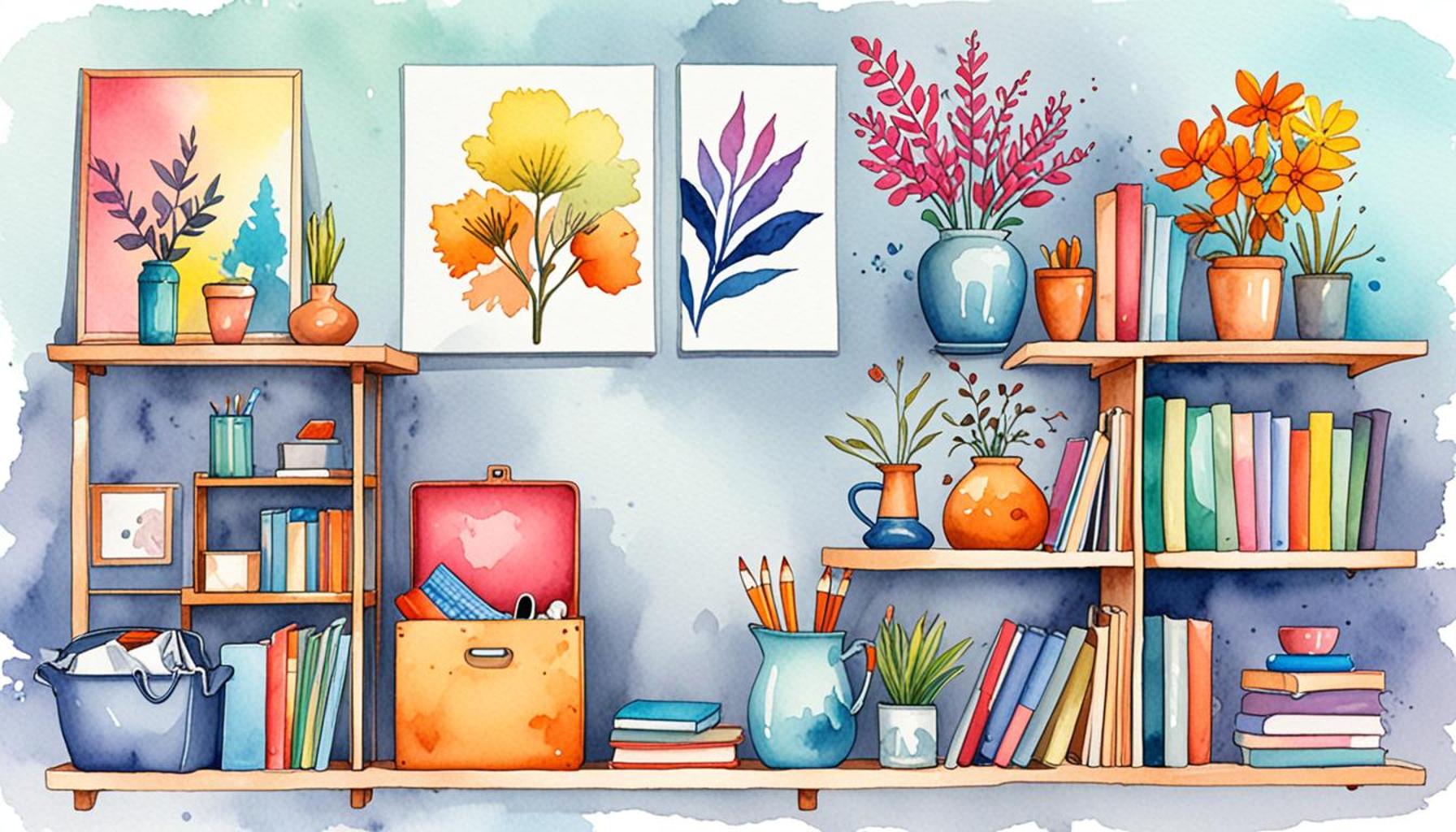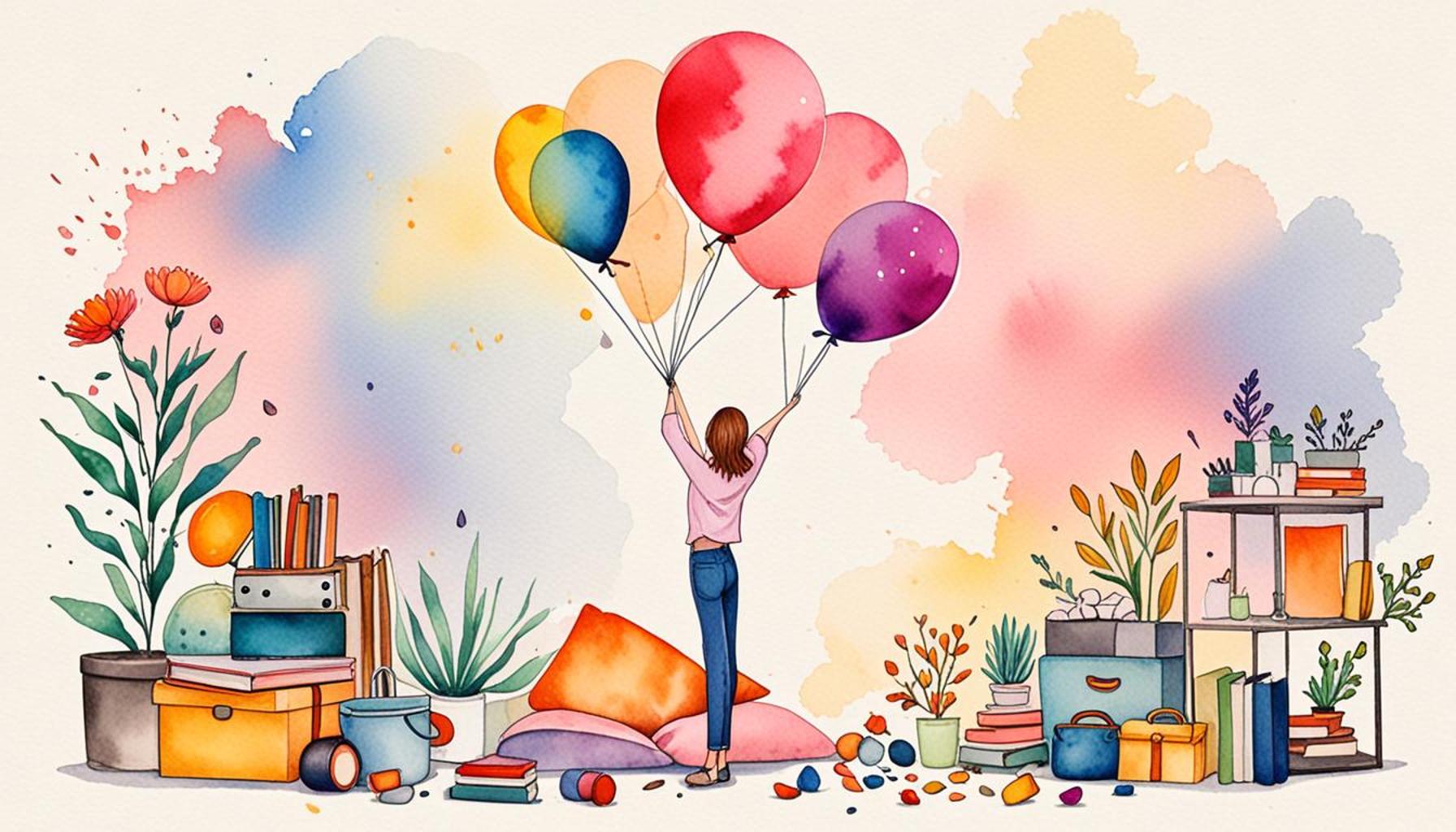How to Create a Decluttering Routine That Sticks: Daily Habits for a Minimalist Life

The Power of Decluttering
Living among chaos—where piles of clothes, stacks of papers, and miscellaneous items dominate the environment—can be a heavy burden. The feeling of being surrounded by clutter often leads to increased stress, anxiety, and even a lack of productivity. As a response to this, many have turned to a minimalist lifestyle, which promises to restore order and mental clarity. The heart of this lifestyle is a decluttering routine that is effective and sustainable, allowing individuals to break free from the clutches of excess.
Why Small Steps Matter
When embarking on the decluttering journey, it’s essential to initiate change with small steps. Opting to focus on a single area, such as a desk drawer or a bathroom cabinet, can significantly lower the initial feelings of being overwhelmed. This targeted approach allows for noticeable progress without the intimidation of tackling an entire room. For example, if you choose a single drawer, empty it entirely, wipe it clean, and then only return items that you regularly use or truly cherish. This small victory can provide motivation to continue the process.
Commit to Daily Practice
Another pivotal aspect is the daily commitment to decluttering. Setting aside just 10 to 15 minutes each day may seem trivial, but over time, this consistency creates substantial change. Consider integrating this routine into your daily habits, such as cleaning for a few minutes each morning before starting your day or dedicating time in the evening to sort through items that have accumulated. For instance, you could select one category of items, like footwear, and choose to examine each pair: do they fit well? Are they still your style? This regular practice helps to make decluttering less daunting and more of a routine lifestyle integration.
Regular Reviews Are Essential
Finally, consistent review is necessary to keep clutter from creeping back in. Many individuals find that setting a recurring date on their calendar—perhaps at the beginning of each month—for a more extensive review can be helpful. During this time, reassess your belongings: what hasn’t been used or what brings you no joy? Implementing a “one in, one out” policy can also aid in preventing clutter: every time you bring something new into your home, ensure you remove at least one item. This not only keeps your space manageable but also fosters mindful consumption.
The Benefits of Minimalism
Transitioning to a minimalist lifestyle can result in a plethora of benefits, including increased focus, reduced stress, and enhanced creativity. A 2011 study published in the journal of Psychological Science noted that individuals in less cluttered environments tend to experience more improved cognitive function and creativity. With the distractions of disorganization diminished, they were able to center their focus on their tasks more effectively. Furthermore, a minimalist home can aid in cultivating a mental space conducive to relaxation and mindfulness practices.

In conclusion, laying the groundwork for a lasting decluttering routine requires dedication and small, deliberate actions. The journey towards minimalism is not just about reducing possessions; it’s about creating an environment that nurtures well-being and promotes a sense of freedom. As you cultivate these habits, you will not only declutter your physical space but enhance the quality of your life overall.
DON’T MISS: Click here to enhance your communication skills
Establishing Your Decluttering Goals
Before diving into the practicalities of a decluttering routine, it’s crucial to define your goals. Understanding what you hope to achieve through the process can drastically shape your approach. Are you looking to create physical space, cultivate mental clarity, or simplify your lifestyle? Taking the time to articulate these goals can serve as a motivating force during challenging moments. Consider jotting down your aspirations in a journal or on a vision board; visual reminders can bolster your commitment to maintaining a minimalist lifestyle.
Creating a Personalized Decluttering Plan
Once your goals are clear, the next step involves developing a personalized decluttering plan. This plan should reflect your specific needs and lifestyle habits. For example, if you identify as a busy professional, a routine that accommodates a hectic schedule with short decluttering sessions may be suitable. You can choose to categorize your belongings, which often leads to more efficient sorting. Some popular categories to consider include:
- Clothing: Assess your wardrobe, keeping items that fit well and spark joy.
- Kitchenware: Evaluate tools and gadgets you frequently use; eliminate duplicates.
- Documents: Sort through paperwork and digital files to eliminate unnecessary clutter.
- Toys: For families, regularly revisiting toys can help keep play spaces tidy.
- Sentimental Items: These often require more thought; consider a special box for keepsakes.
By breaking down tasks into manageable components, you can systematically approach decluttering rather than feeling overwhelmed by the sheer volume of belongings.
Establishing Your Decluttering Trigger
Another effective strategy is to identify a decluttering trigger. A trigger is a specific event or time that prompts you to declutter. This could be as simple as a designated day of the week, such as “Tidying Tuesdays,” or after specific activities, such as completing laundry or before hosting guests. Triggers can help anchor your decluttering routine into your existing daily life. By consistently linking decluttering to these events, it becomes a habitual practice rather than a chore.
Incorporate Mindfulness into Your Routine
Decluttering is as much about mental clarity as it is about physical space. Incorporating mindfulness into your decluttering routine can elevate the experience. Spend a few moments reflecting on how each item contributes to your life. This awareness can guide your decision-making process when it comes to determining which belongings to keep or discard. For instance, as you hold each item, ask yourself: Does this item serve a purpose? Does it add value to my life? This mindful examination can foster a deeper connection with the process and the environment you are creating.
In conclusion, laying out a clear framework for your decluttering journey can set you on the path to success. By establishing defined goals, creating a personalized plan, finding triggers, and weaving in mindfulness, you can build a decluttering routine that genuinely fits your life—one that not only addresses the clutter but also redefines your relationship with your possessions.
Daily Habits to Cultivate for a Minimalist Life
Building a decluttering routine that lasts requires consistency and simplicity. By integrating small daily habits, you can significantly impact your living space and mindset. Here are some effective daily practices to help you maintain a minimalist life:
- One In, One Out Rule: For every new item you bring into your home, consider removing one. This balanced approach helps prevent accumulation and encourages mindfulness about your purchases.
- Daily 10-Minute Declutter: Dedicate just 10 minutes each day to decluttering a specific area. This short commitment can make a significant difference over time, helping to keep your space organized without overwhelming you.
- Evening Reset: Before going to bed, spend a few minutes putting items back in their designated spots. This habit ensures that you start each day with a clean and organized environment.
- Focus on Zones: Tackle one area or zone in your home at a time. Breaking your space into manageable sections allows for thorough decluttering and prevents burnout.
- Mindful Reflection: At the end of the week, take a moment to reflect on what you’ve kept and what’s no longer serving you. This practice promotes ongoing evaluation of your possessions and reinforces your decluttering goals.
Incorporating these daily habits into your routine not only simplifies your living space but also enhances your overall well-being. A minimalist lifestyle can lead to reduced stress, increased focus, and a greater appreciation for the things you truly value. To support your journey further, consider exploring tools and resources dedicated to minimalism.
| Category | Effects |
|---|---|
| Mental Clarity | Decluttering helps reduce cognitive load, making it easier to think clearly and focus on tasks. |
| Emotional Freedom | Letting go of physical items can create an emotional release, fostering a sense of relief and freedom. |
By adopting these habits, you not only declutter your physical environment but also create space for a more fulfilling lifestyle. The act of letting go can be powerful, and with persistence, you will find joy in living minimally.
DISCOVER MORE: Click here to learn how to boost your productivity
Integrating Decluttering into Your Daily Life
Building a successful decluttering routine requires more than just a one-time effort; it’s about making decluttering a consistent part of your everyday life. One effective way to achieve this is by incorporating decluttering into daily activities. For instance, consider making it a habit to remove any items that do not belong in a certain space right after using that area. This small act, often referred to as the “five-minute tidy,” can significantly reduce clutter before it accumulates.
Set a Daily Decluttering Mini-Challenge
To maintain engagement in your decluttering journey, consider introducing a daily decluttering mini-challenge. This can be as simple as dedicating five to ten minutes to declutter a specific area of your home each day. You can select a focus area, such as a desk drawer, a corner of your closet, or even the glove compartment of your car. By making it a mini-challenge, you can turn decluttering into a fun and rewarding game. You may even involve your family, creating a friendly competition around who can declutter their space most effectively.
Embrace the One-In, One-Out Rule
Maintaining a minimalist life often involves adopting the one-in, one-out rule. This principle states that for every new item you bring into your home, you must remove an existing item. This method encourages thoughtfulness in purchasing habits and ensures that your space doesn’t become overrun with new belongings. For example, if you buy a new pair of shoes, consider donating or discarding an older pair that you no longer wear. This simple guideline can not only help manage clutter but also foster intentional decision-making when it comes to new purchases.
Monthly Reviews for Long-Term Success
In addition to daily practices, setting aside time for monthly reviews can significantly contribute to your decluttering success. Use this time to revisit your belongings and assess what still serves a purpose or brings joy. This reflection can help you implement necessary adjustments to your routine, ensuring that it remains effective. As a result, you might find certain areas accumulating more clutter than others, indicating a need for focused decluttering efforts.
The Power of Becoming a ‘No’ Person
Lastly, learn to embrace the power of saying ‘no’—both to yourself and others. This aspect of decluttering often gets overlooked; however, it is essential to effectively managing future clutter. Whether it’s declining to accept gifts, avoiding promotional items, or resisting the urge to collect things you don’t need, being discerning about what enters your life is vital. Building this muscle of refusal can reinforce your commitment to a minimalist lifestyle and support your ongoing decluttering efforts.
By seamlessly integrating these strategies into your daily routine, you can foster a mindset that prioritizes simplicity and intentional living. Each small step sets a foundation for a decluttering practice that not only sticks but also enriches your life. Embracing this approach can lead to lasting changes, ultimately paving the way for a more organized and peaceful living environment.
DISCOVER MORE: Click here to unlock essential productivity hacks
Final Thoughts on Establishing a Sustainable Decluttering Routine
Creating a decluttering routine that genuinely sticks is not merely about tossing items or organizing surfaces; it’s a profound lifestyle adjustment that cultivates mindfulness and intentionality. As we’ve explored throughout this article, developing daily habits is crucial for maintaining a minimalist life. Those five-minute tidies, the engaging mini-challenges, and the transformation of our purchasing mindset through the one-in, one-out rule are all effective methods for integrating decluttering into the fabric of our lives.
Moreover, the practice of holding monthly reviews not only allows for reflection but encourages you to assess your emotional ties to your belongings. It acts as a catalyst for you to continuously refine what adds value to your life. The strength derived from saying ‘no’ can further empower you, ensuring that your space remains a sanctuary rather than a storage unit.
As you embark on this journey, remember that creating a decluttering routine is a gradual process. Patience and persistence are your allies, transforming overwhelming tasks into achievable goals. With these strategies rooted in your daily life, you’re not just managing clutter; you’re nurturing a clear, peaceful mindset that can lead you toward a more organized and fulfilling existence. Dive deeper into these practices, and you will likely find that they not only enhance your physical space but also free your mental and emotional faculties, making room for what truly matters.


